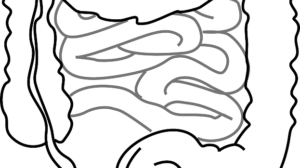What is a Thunderclap Headache?
Thunderclap Headache is a type of headache that can endanger lives.
As the name suggests, thunderclap headache strikes suddenly like a lightning strike.
Usually, this disease arises due to bleeding in and around the brain. The pain that arises can peak in one minute.
This condition requires immediate medical treatment.
Thunderclap Headache Types
Thunderclap headache can be caused by physical activity such as coughing, exercise, or se**xual activity. Because it can be triggered by simple, general activities, a secondary thunderclap headache can occur.
Different from primary thunderclap headache, the secondary type of this disease can occur due to health conditions. It can appear due to a brain aneurysm or infection, a clot in a blood vessel, or bleeding in the brain.
Thunderclap headache symptoms
Thunderclap headache strikes suddenly like lightning. Pain will arise in the area of the head, neck, and even the back.
Here are the symptoms of thunderclap headache.
- Vision changes
- Confusion
- Limp
- Numb
- Attack suddenly and severely
- Peaks in 60 seconds
- It can be accompanied by nausea or vomiting
In addition, there are other signs and symptoms that may arise, such as disturbed mental conditions, fever, and seizures.
Symptoms can arise as a result of certain activities, or without any triggers.
The pain that arises can go away for about an hour after peaking. However, sometimes it lasts up to a week or even more.
Thunderclap headache causes
The cause of sudden headaches typically of thunderclap headache is usually related to bleeding in and around the brain. Some of the following conditions can cause sudden and very severe headaches, such as:
- Rupture of blood vessels in the brain
- Bleeding between the brain and the membrane covering the brain (subarachnoid hemorrhage)
- The presence of a tear in the lining of the artery that supplies blood to the brain
- Blood clot in the brain
- High blood pressure that threatens organs (hypertensive crisis)
- Tissue death or bleeding in the pituitary gland
- Brain infections, such as meningitis or encephalitis
- Ischemic stroke
- Leaking cerebrospinal fluid due to a tear covering nerve roots in the spine.
Heavy physical labor and using certain drugs, including illegal drugs, can also cause sudden headaches like thunder strikes. Then, the habit of bathing with hot water that is first poured into the head can also trigger it.
Side effects of thunderclap headache
The headache causes a very painful pain in the head so it is advisable to immediately ask for medical help to treat it. This type of thunderclap headache usually occurs in early adulthood.
The impact that arises from this headache is also not playful and dangerous. It is estimated that about 30 to 50 percent of all cases of this severe headache result in brain hemorrhage, stroke, and brain swelling.
Diagnosis
The first and foremost step to overcoming thunderclap headaches is to look for the cause. All individuals who experience thunderclap headaches, although often have a history of recurrent headaches such as migraines, should be evaluated immediately. The evaluation begins with a CT scan or MRI of the brain. If necessary, a lumbar puncture is also performed to check brain fluid.
CT scan of the head
A CT scan uses X-rays to produce detailed images of the patient’s brain and head structure. When performing this procedure, the doctor will usually also use an iodine-based dye liquid to add or clarify the image.
Lumbar puncture
Lumbar puncture is done by the doctor by taking a small sample of cerebrospinal fluid, which is the fluid that surrounds the patient’s brain and spinal cord. This sample is then tested for signs of bleeding or infection.
MRI
In some cases, imaging tests such as MRI may be performed for further assessment.
Magnetic resonance angiography (MRA)
MRI machines can be used to map blood flow inside a patient’s brain in an imaging test called MRA.
Thunderclap headache treatment
The treatment of thunderclap headache is certainly adjusted to the cause. This type of treatment can be surgery to repair blocked, torn, or ruptured blood vessels, drugs to control blood pressure, as well as pain medications to reduce the recurrence of headaches that are clearly triggered.



